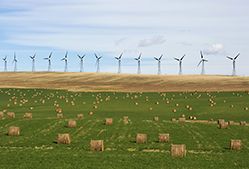Few capital markets developments of recent years have matched the rise and rise of green bonds. The sustainable theme has taken the capital markets by storm over the past year throughout the broad ecosystem of issuers, underwriters, investors, rating agencies, second-opinion providers, industry trade bodies and NGOs
New-issue volumes in the public green-labelled bond market edged towards US$40bn in 2014, but perhaps more important than this number – which was a multiple of previous years – were the firm bases that were established across all industry segments to project the market forward in future years. At IFR’s Green Bond Roundtable, one estimate of issuance in 2015 was US$100bn and a staggering US$160bn in 2016.
If it is to achieve those heights, there’s no doubt that the market will need tightening up and some form of standardisation required. The Green Bond Principles, issued in early 2014, were a solid starting point to get to an early level of consensus around what this market should resemble, while ICMA’s adoption of a governance framework last April and its nomination of an inaugural committee put the market on a more formal self-regulatory footing.
Green Bonds fulfil a host of needs for different segments of the market. Investors have certainty expressed robust interest in securing fixed-income opportunities that tick the box of SRI or ethical investing; while issuers have been keen to express their own sustainability credentials in a public way.
Ready acceptance by the banks was in this respect, perhaps a foregone conclusion. But at the same time it’s fair to say that many of the leading banks have worked hard at building credentials in this space. And in showing some vigour in mobilising and intermediating green capital they have an opportunity to move beyond the perhaps inevitable jibe of jumping on the latest bandwagon to prove that they can be a force for good.
Of course it is easy to be sceptical about green bonds and dismiss some of the developments as marketing or green-washing. And indeed it’s probably the case that the climate-change mitigation benefits of some green bond disbursements have been on the marginal side. But it’s undeniable that the market will harvest hugely positive benefits. Depending on who the issuers are and what their specific needs and orientations are, green bonds will always come in varying shades. And there’s nothing at all wrong with that.
Key here is transparency and ensuring investors have enough information to be able to make qualified decisions up-front. The governance piece at the issuer end needs be made more robust. Issuers owe it to the market to ensure regularly updated reporting – updates in the annual report won’t cut it – with a fair degree of data and project granularity. This element is a bit hit and miss at the moment.
As the market has morphed away from the development finance institutions and multilaterals into the corporate sphere – and within the corporate sphere into power and energy companies among others, issuers will need to work hard to allay concerns of investors and other stakeholders. NGOs will need to maintain a robust and balanced oversight of the market.
The fact that this market transcends straight bond issuance and has encapsulated the emergence of green project bonds, green securitisation, pure-play renewable energy company convertibles, green covered bonds and REITs make it all the more compelling as a broad market development.
To see the digital version of this roundtable, please click here.
To purchase printed copies or a PDF of this report, please email gloria.balbastro@thomsonreuters.com.
